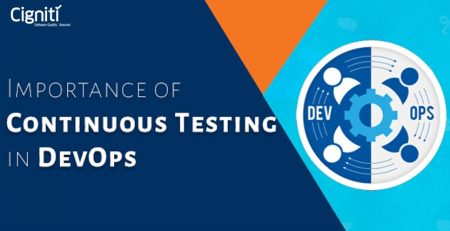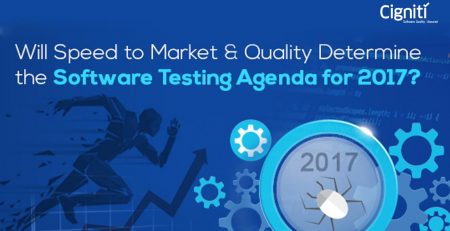ModelOps, ML Validation & ML Assurance: The Next Frontiers of AI-led Digital Assurance
Like humans, Machine Learning (ML) models can recognize intricate patterns and anticipate the outcome of new data. On some natural language problems, ML models have even surpassed human performance. But much like people, ML models are susceptible to error. For every ML application in the real world, estimating how frequently a model will be inaccurate is essential. Intuitively presenting information and emphasizing the best ways to enhance a model are equally important.
According to Gartner, only 53% of ML models get from prototype to production. The sentence may alternatively be expressed as follows: 47% of ML initiatives fail to enter production. There is a good likelihood that a machine learning solution will not be successfully implemented if an organization sets out to do so. For those models that do make it to production, it takes at least three months to get ready for deployment. A real operational expenditure and a longer time to value are the results of the increased time and labor.
Why do ML models fail?
Every data scientist has experienced a circumstance when they believed a machine learning model would be excellent at making a prediction, but when it was put into use, it didn’t work as well as anticipated. In the best-case scenario, this is just a time-wasting inconvenience. However, in the worst situation, unexpected performance from a model might cost millions of dollars or even human lives.
Was the forecasting model inaccurate in such situations? Possibly. But frequently, it’s not the model that’s flawed. Instead, it’s the process used to verify the model. Overly optimistic predictions of what will occur in production result from incorrect validation.
An ML project’s success or failure might depend on several reasons. Let’s consider a few causes of failure.
Setting wrong expectations
The project’s stakeholders may have high expectations for ML models when it first gets underway. However, if the goals and the machine learning model being developed are not in line, issues may occur. Technology is not magic. Everything is designed to function with the situation at hand as the objective. No amount of data analysis and modeling effort can ensure the project’s success if there are no clearly defined objectives and an issue that has to be solved.
Understanding the organization’s data maturity might be useful in determining if the current issue genuinely requires a machine learning solution or whether it can be resolved by a more straightforward analytics solution.
It’s crucial to pay attention to the customer’s issue before even concluding that the project needs a machine learning solution. Numerous solutions may be found by understanding the motivations behind the customer’s request for a machine learning solution. It will assist in defining the objective and foster communication between the business and the data scientist, allowing them to share information and collaborate on a workable solution.
Compromising the quality of data
The quality of machine learning models depends on the quality of the data. For instance, if we train a model to recognize bananas from an image, but our data only contains images of apples, the model will not be able to recognize bananas.
Even if we obtain the most pertinent data for the issue, most of our time is still devoted to data quality and purification tasks. The quality criteria for the data needed to train a machine learning model are high. Low-quality data provided during training would produce a poor model, which would also produce incorrect predictions.
Not every customer is familiar with the jargon of data science and how the data affects the prediction model. Both parties can benefit from working with the customer to help them comprehend the general process and how things function. It is crucial to include data quality standards in the project and collaborate with the client to find and remove the primary source of the bad data issue.
Implement a sound model training and validation process
Know exactly what “clean and representative” data means, and work with the customer to obtain it. Choose the appropriate modeling approach based on the available data. While a complicated non-parametric approach could perform well during training, likely, a reasonably straightforward dataset won’t be a good fit for it.
Utilizing validation techniques while training the data is an alternative strategy. Several techniques may be employed, including cross-validating resampling techniques and the train/test/validation set approach, which uses the validation set after the training cycle and the training and testing datasets during the model’s development.
It’s crucial to validate the outputs of the machine learning model to guarantee their correctness. In general, a large number of training data sets are needed while training a machine learning model, and the main goal of evaluating and validating the model gives machine learning engineers the chance to increase the quality and quantity of the training data.
Conclusion
Therefore, it’s vital to look at the measures that show our model’s effectiveness and the background behind them. AI practitioners must make sure their model is of a high caliber. To achieve this, the machine learning pipeline must incorporate compliance, quality assurance, testing, and validation of AI systems.
ModelOps help minimize human labor and speed up the deployment of ML models. ModelOps promises to transfer models as rapidly as can from the lab to validation, testing, and production while maintaining high-quality results. It allows for the management, scalability, and continuous monitoring of models to identify and address any early indicators of deterioration.
Against this backdrop, join us for an insightful digital dialogue series where Cigniti’s thought leaders give you an in-depth look at ML validation and ML assurance. AI-led digital assurance is extremely important for any digital transformation program’s success. The bedrock of becoming digital-first in modern-day business is ensuring impeccable digital experiences, and customers today are looking to leverage this expertise further.
Join Srinivas Atreya, Chief Data Scientist at RoundSqr (Part of Cigniti), Kiran Kuchimanchi, Chief Executive Officer at RoundSqr (Part of Cigniti), and Sairam Vedam, Chief Marketing Officer at Cigniti as they share insights on the best practices of ModelOps, ML Validation, and ML Assurance.
If you need help with ModelOps, model validation, or data leakage in ML, visit Cigniti Digital Engineering Services.






Leave a Reply